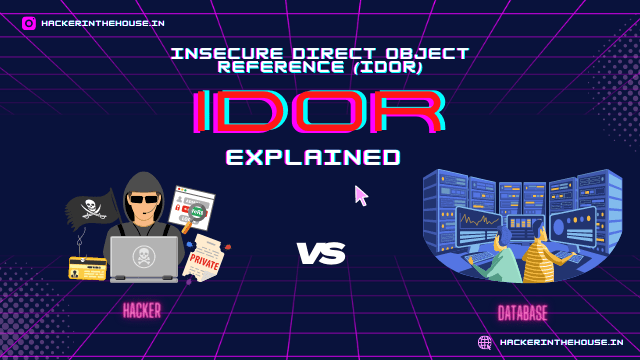Security Operations Center is a part of the IT department that screens and shields the’s organization from dangers.
The SOC is generally partitioned into various segments or groups, each liable for checking different classification of security events.
The SOC groups are typically furnished with different tools to monitor the organization and its traffic.
Top SOC Analyst Tools
All Categories of Apparatuses utilized in Security Operations Center:
• SIEM (Security Information and Event Management)
• EDR (Endpoint Detection and Response)
• XDR (eXtensible Detection and Response)
• Antivirus
• Threat Intelligence
• Cloud Security
• Email Gateway
• Web Gateway
• Firewall
• IDS
• Malware Analysis Tools
• Threat Hunting Tools
• SOAR
• Web Application Firewall
• Application Control Tools
• Data Loss Prevention Tools
SIEM (Security Information and Event Management)
A Security Information and Event Management (SIEM) tool is utilized to monitor and manage security of an organization. It can gather data from different sources, including firewalls, IDS/IPS, antivirus softwares, and log files from the system framework.
It gives continuous information about what’s going on the network. This incorporates who is accessing to it, what they are getting to, when they access it, how frequently they access it, and so forth. The SIEM tool can then investigate this information and give alarms when there are any dubious exercises on the organization.
EDR (Endpoint Detection and Response)
Endpoint Detection and Response (EDR) is a service that assists associations with distinguishing, contain, and respond cyberattacks.
EDR gives the capacity to gather endpoint information from an expansive scope of sources, including both on-premises and cloud-based frameworks. It additionally offers the capacity to run custom scripts to distinguish malicious activities. EDR has been involved by numerous associations as a significant tool in their security weaponry.
XDR (eXtensible Detection and Response)
XDR is a detection and response architecture that gives a system for coordinating security technologies, processes, and individuals. It comprises of three principal parts:
1) an XDR-detection engine (XDE), which detects anomalies in data flow;
2) an XDR-response engine (XRE), which responds to detected anomalies by taking corrective action; and
3) the XDR-framework (XDF), which enables the integration of security technologies, processes, and individuals into the XDR architecture.
To accomplish its objectives of detecting abnormalities in data flow while keeping up with high performance in processing speed, the XDE is based on top of machine learning algorithms.
Antivirus
Antivirus software is a sort of safety software intended to safeguard computers from malware, for example, computer viruses, worms, and Trojan horse.
At the point when we purchase another PC, the main thing that we ought to do is install an antivirus software on it. This will assist us with trying not to install malware on our PC and safeguard us in the event that one gets installed.
Threat Intelligence
Threat intelligence is a process of gathering, analyzing and spreading information about cybersecurity dangers. Threat intelligence informs associations about the current cyber-threat landscape, assists them with understanding the dangers they face and provide guidance on the most proficient method to best shield themselves from these dangers.
It likewise assists associations with understanding how their adversaries are operating, what methods they are utilizing and what capabilities they have. This information can be utilized to more readily anticipate future attacks, prioritize defenses and designate assets all the more productively.
Cloud Security
Cloud security software is a type of malware security software that safeguards data stored in the cloud. It does as such by scanning for vulnerabilities and monitoring access to cloud-stored data.
Cloud security software provides a various layers of protection for your data. These include encryption, firewalls and IPS (intrusion prevention system), as well as the capability to monitor and control access to your data from anywhere in the world.
Email Gateway
An email gateway is a framework which receives emails from the Internet, makes an interpretation of them into another protocol like POP3, SMTP or IMAP, and then forwards them to an email server.
A common use case would be a venture that has an Exchange Server on-premises and needs to send mail to external domains. They would install an email gateway on their corporate LAN that can get mail from the Web and make an interpretation of it into SMTP. The SMTP server then sends it by means of a VPN passage to the Exchange Server for conveyance.
A Safe Email Gateway is a server that sits between the email client and the email server. It filters all the emails for spam and malware.
This gateway is great for organizations who need to guarantee that their workers are protected from phishing attacks, spam, and other malicious contents.
Web Gateway
A Safe Web Gateway is a sort of proxy server that is utilized to shield the organization from undesirable traffic.
A Safe Web Gateway can be designed to hinder explicit sorts of web page content, for example, social media sites, or just simply limit access to specific sites.
It additionally gives protection against malware and phishing by checking all approaching web traffic for malicious code.
Firewall
A firewall is a gadget or set of devices that shield a computer or network from undesirable web traffic.
A firewall commonly permits only approved computers and networks to connect to a local area network (LAN) or personal computer (PC). It blocks unapproved access by clients on the web, like hackers, from accessing the LAN. A firewall might be utilized in mix with other safety efforts.
IDS
IDS is a framework that screens the network and detects any uncommon activity that could indicate an intrusion.
IDS can monitor the network for any uncommon activity, like unapproved access or endeavored attacks. It can likewise recognize on the off chance that somebody is attempting to go through a firewall to get access to data or attack a server.
Malware Analysis Tools
Malware analysis is the process of inspecting a program to determine what it does and how it does it. Malware analysis is an important part of cyber security.
The objective of Malware Analysis is to find and eliminate malicious software, likewise called malware, from a system. Malware can be named either an virus or a worm. Viruses are programs that infects different projects or files on disk, while worms are self-reproducing programs that contaminate different machines over the web by sending duplicates of themselves to others connected on the network.
Threat Hunting Tools
Threat Hunting tools are utilized to recognize and investigate dubious activities on the network. They can recognize a compromised account, to see whether there is any malware or ransomware in the network, identify strange behavior in a worker’s computer, or even see whether there is a malicious insider danger. These tools can be both free or paid for relying upon what the association needs them for.
There are various kinds of dangers that these tools can assist with, for example, email, website, social media dangers and much more.
SOAR
SOAR tools are utilized to automate the response to security incidents by giving an interface for incident response teams.
Security Orchestration Automation and Response (SOAR) is a type of software that assists incident response teams in their endeavors to respond to security dangers. SOAR tools automate the response process by giving a connection point to every one of the means engaged with responding to a security incident.
Web Application Firewall
A web application firewall (WAF) is a kind of software firewall that safeguards web applications from web based attacks.
A WAF can be install on a server or as a cloud service. It can filters HTTP requests, searching for forms of example, SQL injection and cross-site scripting.
A web application firewall can be utilized to safeguard against many kinds of malicious attacks, including:
1) Cross-site scripting (XSS)
2) SQL Injection
Application Control Tools
Application control tools are utilized to watch out for the utilization of applications by workers. There are many use instances of application control tools, yet they all have a similar objective – to monitor and restrict the time that workers spend on specific applications.
Application control tools can be utilized in a various of ways. They can be utilized to restrict the time that workers spend on certain applications and websites, or they can be utilized to monitor worker activity and send reports about it.
Data Loss Prevention Tools
Data Loss Prevention Tools are technologies and policies that are utilized to guarantee that data isn’t lost or stolen.
Data Loss Prevention Tools can be carried out in different ways, contingent upon the size of the organization and the kind of data they need to secure.
All organizations ought to carry out Data Loss Prevention Tools to ensure that their data isn’t lost or stolen.
Thank You for reading!











Leave a Reply